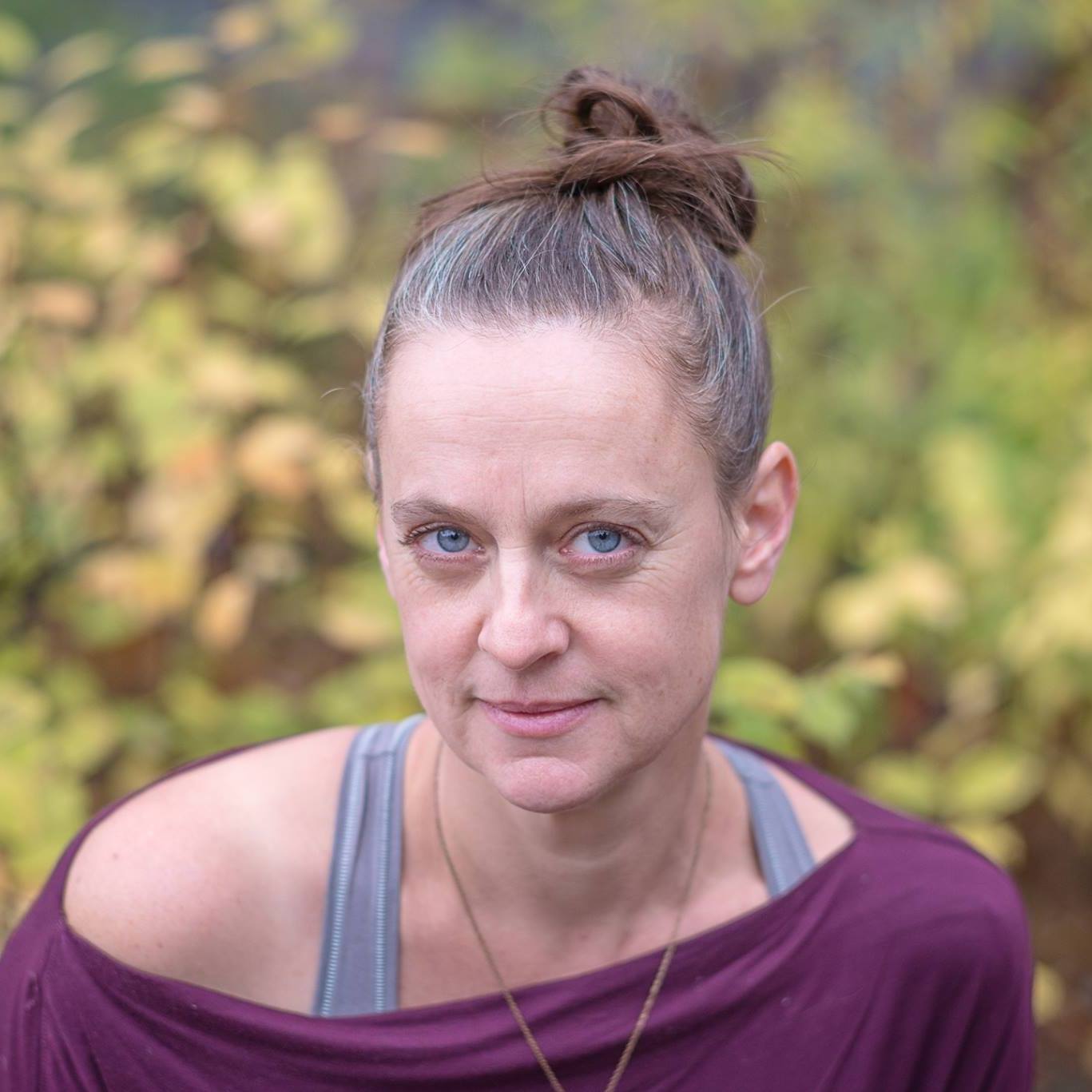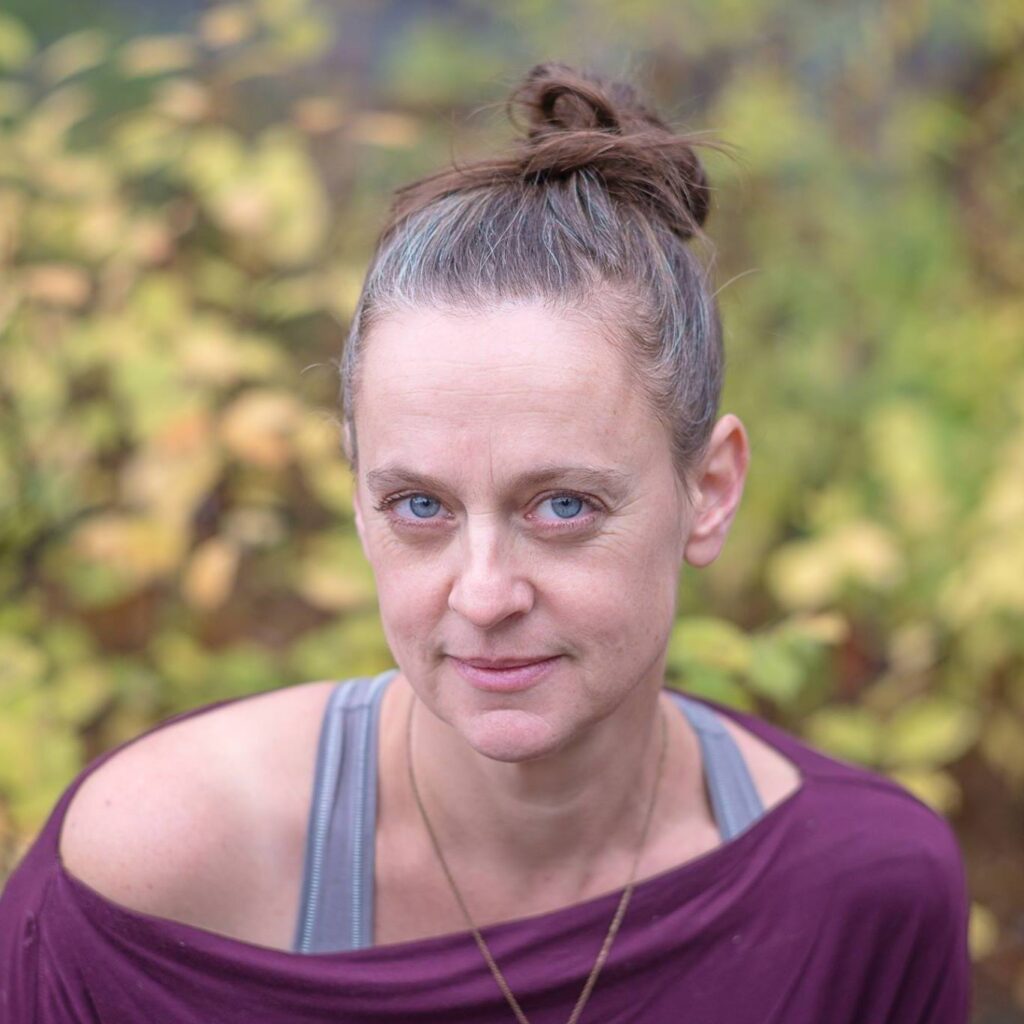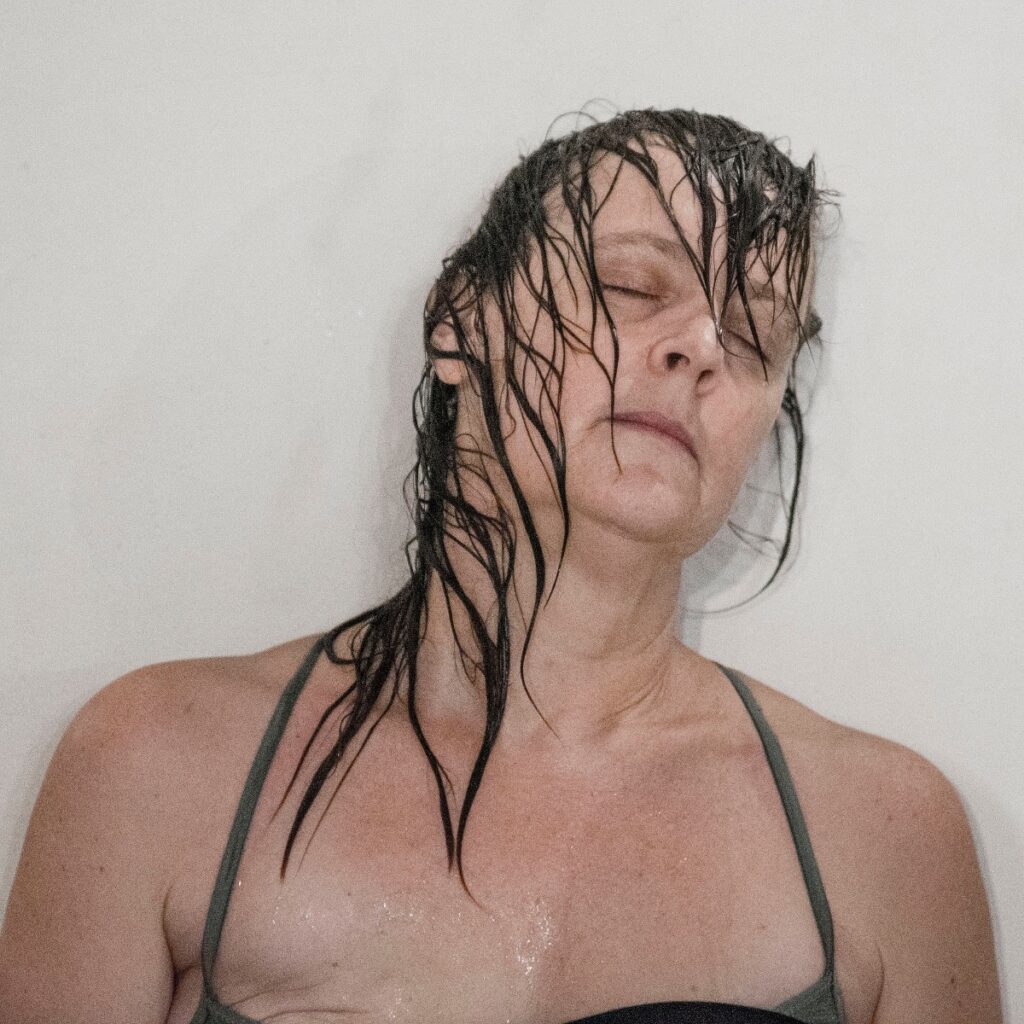
Cummings, 50, is the new artistic director of Moonhorse Dance Theatre (Older and Reckless). She is also a creative artist doing her own work, and her new piece Bear opens tonight at the Citadel (running Jan. 17 to 20). She could also be a poster child for how to survive being a dance artist in Toronto, not to mention that she has led a most adventurous, even eventful life. Cummings is a single mother of a ten year old son, Porter, and is a breast cancer survivor (five years cancer free).
What follows is Cummings’ candid interview which we conducted over zoom.

First of all, what is your new piece Bear about?
Well…..hmmmm…. it’s about what makes up a life and the dramatic events and choices that make life seem so big and all encompassing, but then it’s really so insignificant as each individual life fits into the larger massive complex natural system that is ongoing. (the universe, space, constellations). And…. it’s a confrontation of having to face my mortality as a solo mother of a young child (with Stage 3 cancer during Covid).
Clearly it’s a piece you had to get out. How long have you been working on Bear?
Four years.
You graduated high school from the Claude Watson School of the Arts in dance. What followed after?
I took dance classes at TDT, and then believe it or not, I followed the Grateful Dead across the continent with other Deadheads. When I got to BC and Hornby Island, I was living in a hippie culture. I later performed with EDAM in Vancouver. Then I worked on fringe shows, followed by the Caravan Stage Barge.
When you look over your half century, how did you manage to exist as an independent artist?
I did residencies before my son was born. I’ve been a rehearsal director and dramaturge. I applied for grants. People commissioned me to create dances for them. I was a volunteer in theatres so I could watch dance.
But how did you cover your rent?
I manage an eight-unit building which supplements my rent, and yes, I mop floors.
You also had a love affair with West Africa, particularly Ghana.
I’ve never been interested in Europe. When I was a teenager, I was fascinated by Africa. I would pour over books, particularly about the art work and the music. In 1994, I found a cheap flight on Bulgarian Airlines and flew to Accra. I found dancers and made pieces, always learning more and more about the culture. I was being humbled every day. This year, I took Porter to Ghana to introduce him to Africa.

That maverick, iconoclast artistic director, Hillar Liitoja of DNA Theatre, was a big influence in your life. He truly was a wild man of experimental expressionism.
He was a huge part of my life. He helped create the artist that I am. He was brilliant, narcissistic, generous, and eccentric. Being around him and his crazy cult of acolytes was pandemonium. Did you know that when he died in 2023, in his will he left instructions for three parties?
How did you meet him?
I was leading a hippie existence on the Caravan Stage Barge. The ship was built in Kingston and we sailed around, putting on shows. When that ended I met Hillar through Cathy Gordon who was a member of his company.
I auditioned for the show Phalanx and it blew my life open. I was 25 and was already adventurous. The three hours of Phalanx put your life at risk.
How did Hillar affect you as an artist?
In the experimental way I look at art. You don’t ask the meaning; you experience it. It should be rich with emotion. This has led to what some people might consider off-the-wall choreography. I don’t do work that is conventional or traditional. It gave me permission to create work that I wanted to do. I don’t have to explain my voice in terms of what dance performance is supposed to be.
How long were you with DNA?
From 1997 to 2003, first under Hillar and then Cathy. At the same time I was creating solo works of my own. I moved out of that scene when I married. I’m now divorced.

Let’s get to the heart of the matter – your becoming artistic director of Moonhorse Dance Theatre last year.
I was in my late 40s, and I thought my career was over after Covid and cancer. I was taking a sommelier course at George Brown. I’ve always been a wine enthusiast. Then Claudia Moore announced her retirement from Moonhorse and I applied. I took over on Nov. 1, 2023. Oddly enough, seven years ago I had coffee with Claudia and she wondered about her legacy. Would anyone want to take the company over?
How would you define Moonhorse?
A company, through the Older and Reckless program, that celebrates and creates opportunities for artists over 45. The mandate is to feature artists who have dedicated their lives to their craft. Moonhorse was founded in 1996 to showcase Claudia’s work, and the first Older and Reckless was in 2000, We’re funded by all three levels of arts councils. I’ve been a life-long dance artist, and now as artistic director, I can celebrate other life-long dance artists. O&R has taken over Moonhorse.
What are your plans for the company?
I want to stay loyal to the original vision, showcasing established artists who have shown a commitment to their craft. Many older artists don’t have access to theatres. I have a curiosity in exploring alternative venues with my peers, like industrial spaces.
Do you have specific plans for O&R?
Artists of my generation haven’t been heard from for a while, so I’d like to showcase the work of Gen-Xs. I’d really like the shows to feature different voices.
How do you build an O&R program?
It’s a curated program. People send me videos and I also go to watch shows. I also spent a lot of time this year reaching out to people and asking what they were doing.
There used to be three O&R performances a year at Dancemakers but then Claudia moved it to one performance at Harbourfront.
She wanted a bigger stage and more prestige, so it became one show a year. At this point, I will keep this format.
Classes for seniors are another important component of Moonhorse.
It’s where professional dancers teach amateur enthusiasts. I’ve expanded it to everyone over 45, and the teachers design classes to accommodate everyone. It’s an open invitation to come as you are.
The focus used to be serious about health and movement. Now the focus is dancing together at your own capacity. Ten to twelve teachers rotate, and people are introduced to such things as improvisation and Skinner releasing technique. They can come to Eastminster United Church, or do the classes online.
There’s also the community project.
It’s where a choreographer creates a piece on non-professional dancers, that is then put on stage. I choreographed a six-minute work for 16 people that included two professionals – Julia Sasso and Bonnie Kim. It was a whirlwind of a process.
Explain the mentorship program to me.
Every two years, two or three mentees who are emerging artists, or in mid-career, chose a mentor to work with, and their piece is then shown in a studio setting.
I’m actually thinking about a different look, however – that a mentee choses someone outside of dance to be the mentor – to cross disciplinary and cultural lines, to step outside of the box. I’m looking at something multidisciplinary. Maybe there can be a city wide organization where we partner with other disciplines to do something experimental.
Do you have any final thoughts?
It’s been a year of transitions!
